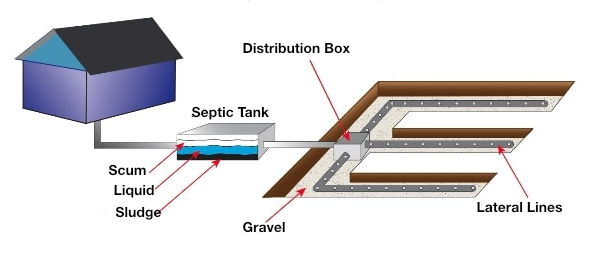Sugarhill is NOT connected to the municipal sewer system. Each home has it's own septic system. This is a normal situation. Connection to the Martin County sewer system running under Jensen Beach Blvd. would be an extraordinary needles cost.
A septic system is an essential component of any home that is not connected to a municipal sewer system. It is a self-contained wastewater treatment system that is responsible for treating and disposing of the wastewater generated by the household. The septic system consists of a septic tank and a drain field or lateral lines. The septic tank is responsible for separating the solid waste from the liquid waste, while the drain field or lateral lines are responsible for disposing of the liquid waste. In this story, I will discuss how to maintain a septic system and the lateral lines based on 30+ years of experience with my homes.
The first step in maintaining a septic system is to have it inspected regularly. A professional septic system inspector should inspect the system every three to five years. During the inspection, the inspector will check the septic tank for any signs of damage or leaks. They will also check the drain field or lateral lines for any signs of clogging or damage. Regular inspections can help identify any potential problems before they become major issues.
The second step in maintaining a septic system is to have it pumped regularly. The frequency of pumping depends on the size of the septic tank and the number of people living in the house. As a general rule, a septic tank should be pumped every three to five years. Pumping the septic tank removes the solid waste that has accumulated in the tank. If the solid waste is not removed, it can clog the drain field or lateral lines, leading to costly repairs or possibly just having the lateral lines jetted with high pressure.
The third step in maintaining a septic system is to avoid putting certain items down the drain. Items such as grease, oil, coffee grounds, and non-biodegradable items can clog the drain field or lateral lines. Homeowners should also avoid flushing items such as feminine hygiene products, diapers, and wipes down the toilet.
The forth step in maintaining a septic system is to be aware of the signs of a problem. Signs of a problem include slow draining sinks or toilets, foul odors, and wet spots in the yard. If any of these signs are present, homeowners should contact a professional septic system inspector immediately.
Regular inspections, pumping, avoiding certain items down the drain, and being aware of the signs of a problem are all important steps in maintaining a septic system. By following these steps, homeowners can ensure that their septic system will function properly for many years to come.
Over time lateral lines can become clogged with debris, causing the septic system to malfunction and potentially leading to costly repairs. One effective method for cleaning septic lateral lines is pressure cleaning. Unfortunately not all septic system maintenance people will tell you that. They want to sell you a $10,000-$20,000 entire system replacement.
Pressure cleaning, also known as hydro jetting, is a process that involves using high-pressure water to clean out the lateral lines. This method is highly effective at removing stubborn clogs and debris that may be blocking the flow of wastewater. The pressure of the water can be adjusted to suit the specific needs of the lateral lines, ensuring that they are thoroughly cleaned without causing any damage. I know of one area company that never tells it's customers about hydro jetting and pretty much pretends to not know about it. The hydro jetting cost is minimal when compared to system replacement.
